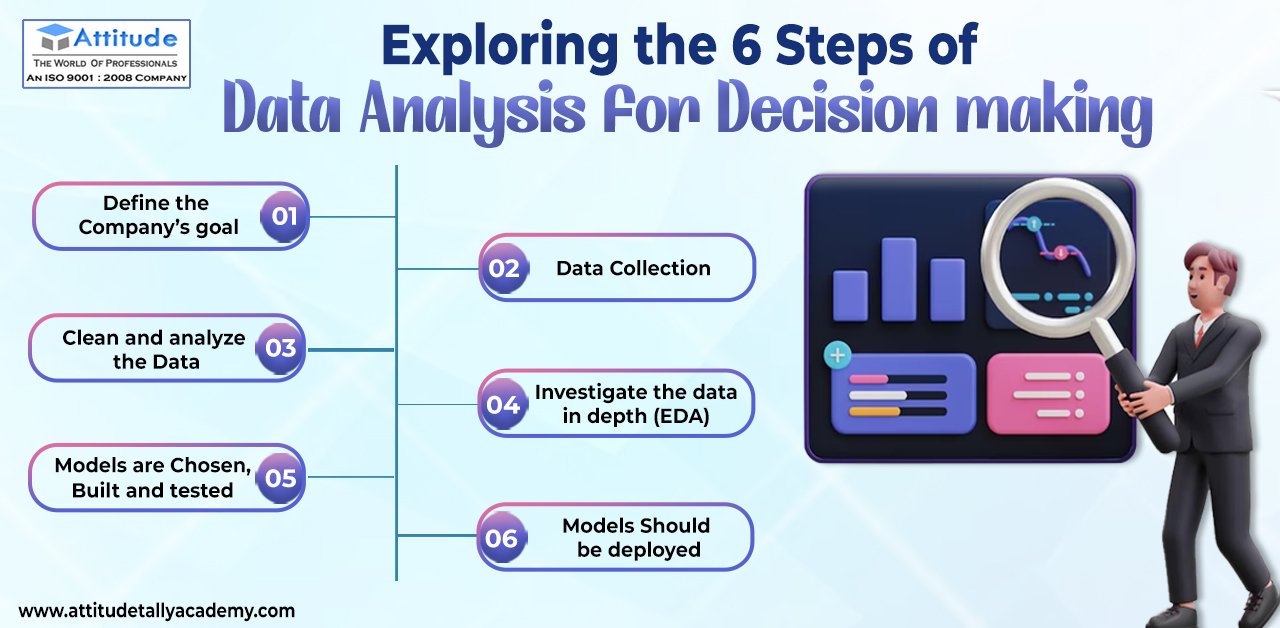Introduction
In today’s rapidly evolving business landscape, data holds the key to unlocking valuable insights and making informed decisions. our primary goal is to empower businesses with the tools and strategies needed to harness the power of data for strategic decision-making. In this blog post, we’ll delve into the six essential steps of data analysis, providing you with a roadmap to navigate the intricate world of data-driven decision-making.
- Define the Company’s Goal:
Before embarking on any data analysis journey, it’s crucial to clearly define the company’s goals. Whether it’s improving customer satisfaction, optimizing marketing strategies, or enhancing operational efficiency, a well-defined goal serves as the North Star guiding your data analysis efforts.
- Data Collection:
Once the goal is set, the next step is to gather the raw material for analysis – data. In the digital age, information is abundant, and the key lies in collecting relevant, accurate, and comprehensive data. This may involve leveraging various sources such as customer databases, social media metrics, website analytics, and more.
- Clear and Analyze the Data:
With a treasure trove of data at your disposal, the next challenge is to make sense of it. Cleaning and preprocessing the data are vital steps to ensure accuracy and reliability. Utilize advanced analytics tools to dissect the data, identify patterns, and extract meaningful insights. Visualization techniques, such as charts and graphs, can be powerful allies in presenting complex information in a digestible format.
- Investigate the Data in Depth (EDA):
Exploratory Data Analysis (EDA) is a crucial phase where the focus shifts to understanding the nuances of the data. This involves identifying outliers, trends, and correlations that may not be immediately apparent. EDA not only enriches your understanding of the data but also helps in refining subsequent analysis steps.
- Models are Chosen, Built, and Tested:
Armed with a comprehensive understanding of the data, it’s time to choose appropriate models that align with your analysis goals. Whether it’s machine learning algorithms, statistical models, or predictive analytics, the chosen models should be meticulously crafted and rigorously tested to ensure accuracy and reliability.
- Models Should be Deployed:
The culmination of the data analysis journey is the deployment of models into your business operations. This involves integrating the insights gained into your decision-making processes, ensuring that the data-driven strategies become an integral part of your day-to-day operations.
In conclusion
Mastering the art of data analysis requires a systematic approach and a commitment to continuous improvement. By Advanced analytics tools which defining goals, collecting and analyzing data, delving into exploratory analysis, choosing, building, and testing models, and finally deploying them, businesses can harness the power of data to make informed decisions and stay ahead in today’s competitive landscape. Embrace the transformative potential of data, and let it guide your path to success.
Suggested links: Python For Data Analytics Become Expert In Data Science Power BI Training
MIS Reporting With VBA, Dashboard




